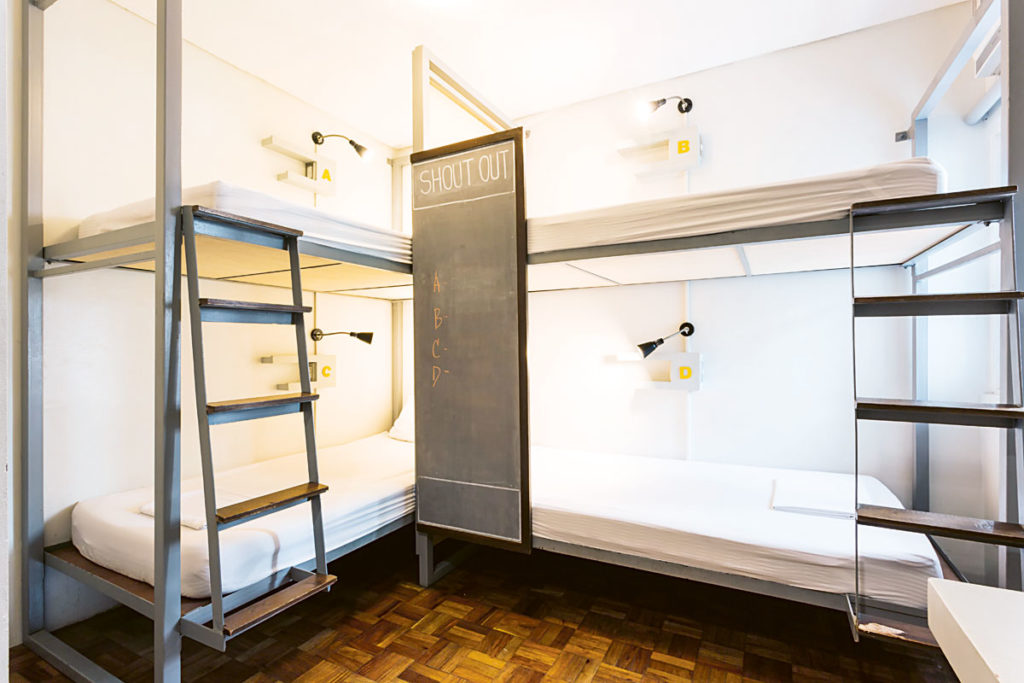Forget everything you think you know about hostels. They’re growing up, getting creative, and even catering to other guests aside from backpackers these days. Some took cues from hotels and established a hybrid of class and casual, others showcase designed interiors and amenities, while some stick to the tried and tested hostel service, all with the same cheap price compared to other kinds of accommodations. With more scrutinizing guests and the presence of online feedback, competition among hostels have gotten stronger, making them solid contenders in the hospitality industry versus other accommodations.
Posh space

Travelers today have become more budget-conscious yet discerning in choosing their travel accommodations, particularly in hostels. They expect something more than just a bunk bed inside a room full of snoring strangers; they want affordable yet stylish places to stay, and in response, numerous hostels have been combining the look and luxury of a hotel with the rate and sensibility of a hostel. This gave rise to “poshtels”, and they have been spreading throughout Europe and America to cater to the backpackers and business travelers since 2012. In January 2015, Z Hostel was established in the bustling neighborhood of Poblacion. Ironically, the hostel stands where the infamous brothel Palacio ni Don Pedro used to operate, and while the manager admits that they would still get inquiries from guests who used to frequent the brothel, Z earned a reputation as the first and only luxury hostel in the country. Although it is pricier compared to the other hostels, guests are willing to pay extra to enjoy the modern amenities like the sophisticated lobby area, cashless café/function room, air-conditioned rooms with en-suite bathrooms, and a roof deck night bar which is a favorite purlieu of party-going locals and foreigners staying in the neighborhood.
Communal concept
What hostels lack in privacy (like communal bathrooms), they make up for aesthetics and chemistry, which are opportunities that arise for socializing with fellow travelers in common rooms and lounges. After all, this is what hostels sell apart from all the other accommodations out there. A few steps outside Z Hostel, Junction Hostel is hip, artsy, and social. Established in February 2015, this three-story building is a visual feast of quirky designs and furniture, industrial-inspired interiors, and hangout spots for common interaction. Contemporary rooms are available to a mix of solo travelers, couples, small and large groups of travelers, and even families. The young owner and staff running the hostel keeps the place as it is. Travelers repeatedly check-in as they could just chat up the staff instead of booking online for a reservation after establishing good rapport with them. The laid back ambiance in the hostel makes socializing easy and less awkward, and Junction Hostels vibrant common space tends to be a creative co-working environment which a hotel lounge is not. The multipurpose lobby serves as a café/co-working space for guests, with a revamped food truck offering drinks and quick bites for solo or sharing.
Drawn to local
MNL Boutique has been in business two years earlier than the previous hostels mentioned, and is one of the first that popped up in the metro in 2013. The team behind the hostel refurbished an old two-story house and painted it colorfully on the inside, while vibrant pink and violet lines are painted outside that catches one’s attention amidst the malls, restaurants, and high-rise condominiums surrounding the place. Wanting to let travelers experience simple lodging that comes with no sophisticated lobbies or multipurpose cafés, MNL makes up for the authentic backpacker experience with a local spin; a true tambay session that happens every so often between groups of friends. The owners of the hostel utilize balut vendors and make foreigners try the popular street food, with everyone gathering around a wooden table, holding beers in hand; card games and lambanog tasting nights pave way for locals and foreigners to converse and bond together; the hallway and rooms are designed with contemporary Filipino artworks, and reception staff are open to recommend tours that promote the country’s culture.
Subscribe to our weekly newsletter to receive all the tools and solutions entrepreneurs need to stay updated on the latest news in the industry